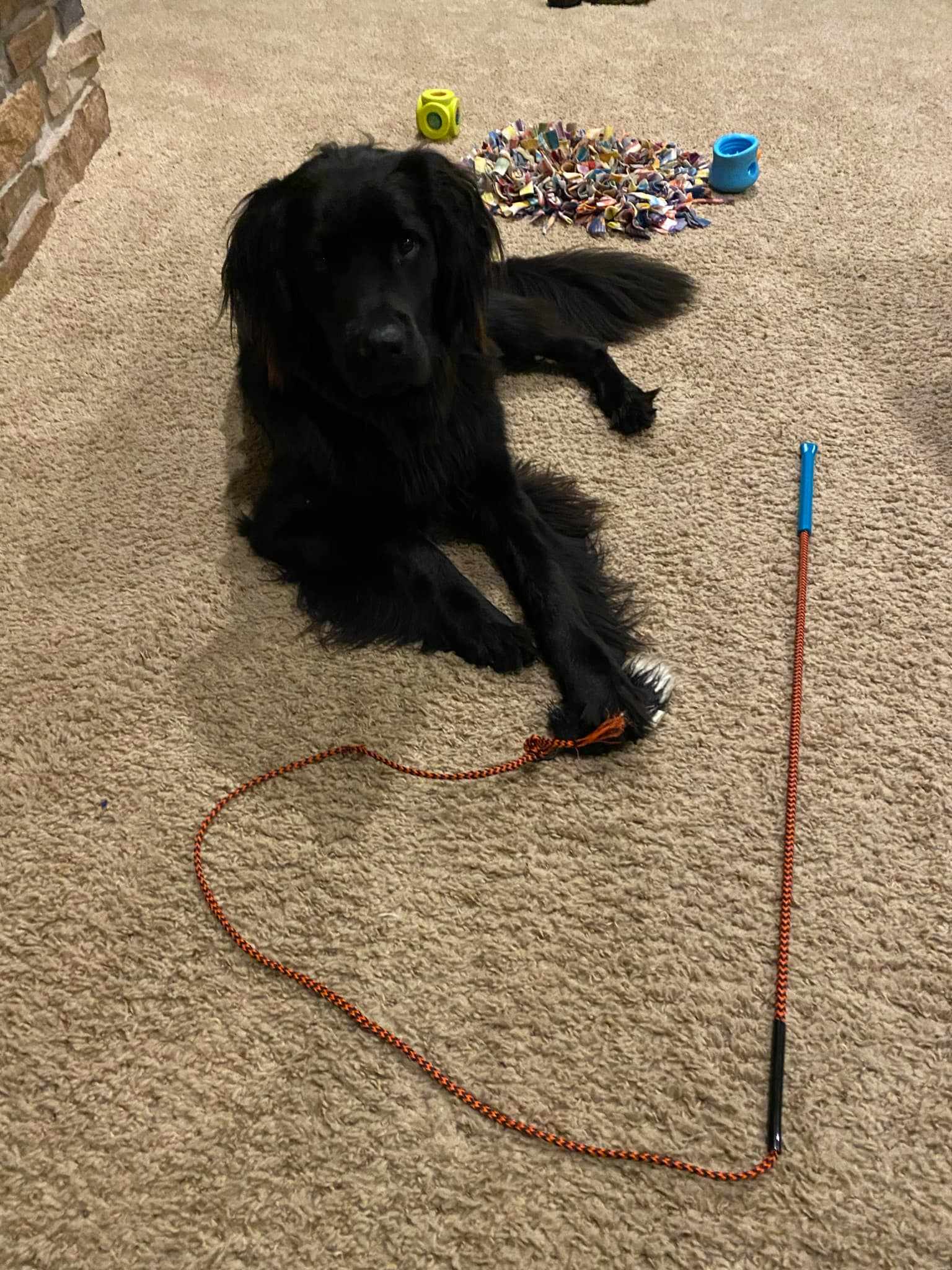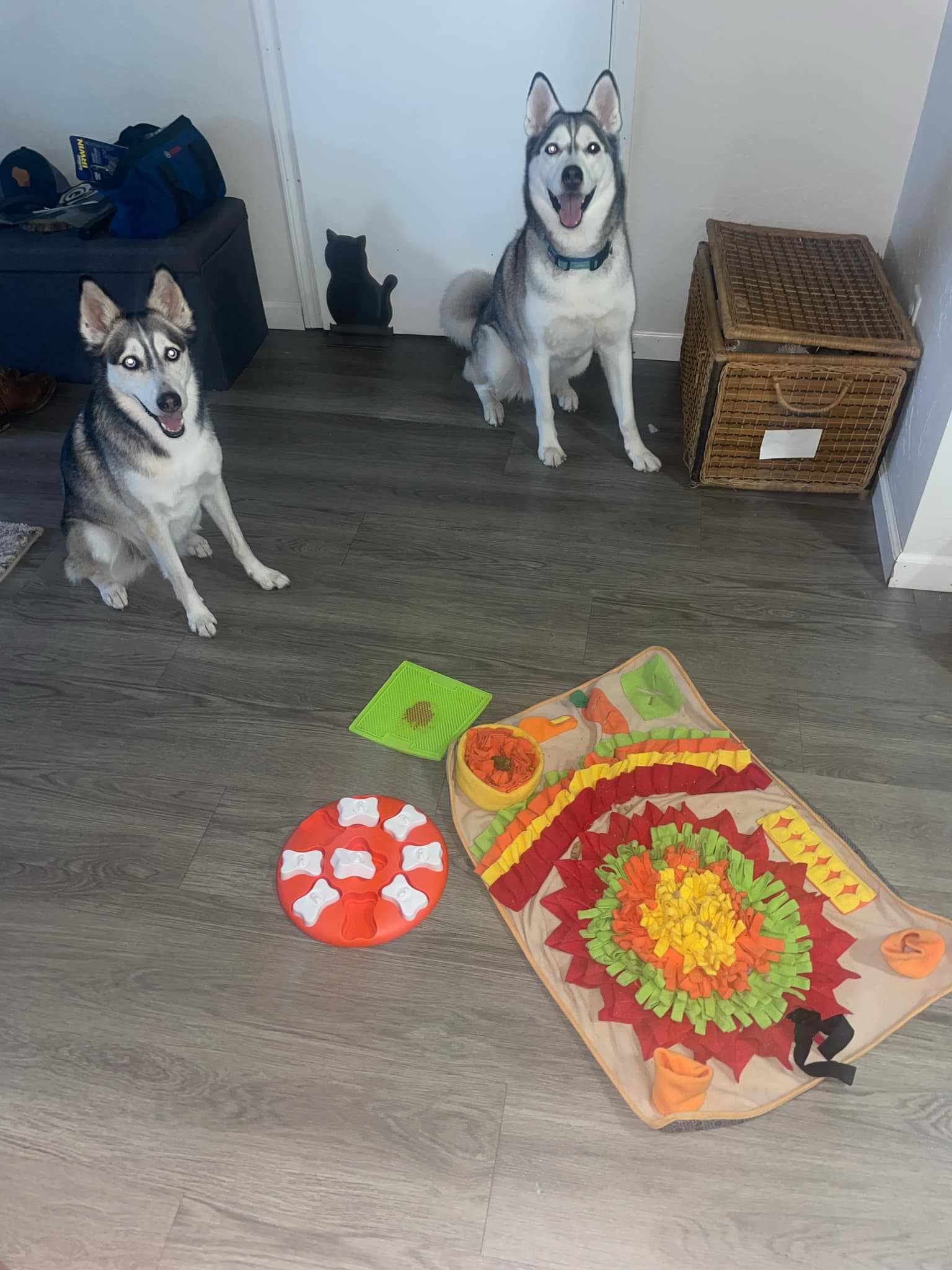Back to School and Pets:
A Guide to Helping Your Pets Adjust to the Change
Meet Bear. Bear's favorite person went back to school, and now he's feeling sad and a bit lost, finding comfort by lying on their clothes. Bear isn't alone; many pets struggle when back-to-school time arrives, finding they have less time with their humans than during summer break. While back-to-school can be stressful for kids and parents, it can also be tough on pets. But it doesn't have to be. In this blog, we'll guide you on how to help your pets adjust to the changes that come with back to school and pets.

Back to School and Pets: The Impact
During the summer, our schedules are very different. There are more activities, more people, and more noise. But when school starts, this all changes, leaving your pet wondering, "What happened? Where did everyone go?" To our pets, we are their whole world. Imagine being in their shoes; they depend on us for food, interaction, and cuddle time. When this suddenly changes, it can be confusing and upsetting, especially for pets who get deeply attached to your kids. Pets used to the commotion of summer break may start to feel confused or anxious when the house empties for school time.
Signs of Pet Separation Anxiety
Pets experiencing separation anxiety may exhibit some of these behaviors:

While these behaviors are visible in both dogs and cats, cats may also exhibit the following:
Preparing Your Pet for Back to School
You can help prepare your pet for when the kids return to school by establishing a consistent routine.
Build a New Routine
Many pets thrive on routine, so it's essential to have a routine in place so your dog or cat can anticipate what to expect. Establishing patterns within your routine, such as using the same commands, is also helpful. Before you leave, give a small treat and follow a routine like a short walk or kennel time.
When you first get home, you should greet your pet immediately. Say hello, get down on the ground, let your pet give you kisses, and take them outside to play. This way, your pet understands that you are coming home, that you didn't forget about them, and that your leaving isn't permanent.
Practice the New Routine
Once you have a new routine set, practicing it before school starts is a good idea. A few weeks before school begins, sit down with your family to discuss your new schedule and how your pet fits into it. Start practicing this routine daily. Get up at the same time, feed your pet at the same time, and incorporate regular walks and playtime. If your dog will be attending doggy daycare, begin with short visits to help them get used to it.
Easing Your Pet Into the New Routine
As summer ends, your pet has likely grown used to having you around more, which can make the upcoming changes in your family's routine an adjustment. To help your pet adapt to being alone, leave them alone for short periods, and do a quick trip to the grocery store or a walk outside. Gradually increase the time you're gone as your pet becomes more comfortable with being alone. After you return, help them burn off any excess energy with walks or playtime. For pets using a kennel, try to maintain a consistent routine even when you are away from home. Additionally, spend quality time with your pet when you're home.
Don't Forget About Exercise
Exercise for your pet is vital. A dog or cat with pent-up energy left home alone all day may become destructive. A tired pet is a happy pet, and the way to accomplish that is by exercise. Before you leave for the day, ensure your pet gets enough exercise. In the morning, play a game of fetch with your dog or take them for a brisk walk or jog. Cats also benefit from playtime with toys like feather wands or laser pointers. Regular exercise helps manage your pet's pent-up energy and reduces destructive behavior.

Dog wands, like the one pictured, provide amazing exercise and stimulation for your dog. Click the image to learn more.
If you have a very energetic dog, consider brief doggy daycare visits or hiring a dog walker to take your dog out for walks during the day. Buddy's Vets also offers a Buddy Babysitting service, providing an additional option for keeping your pet active and cared for while you're away.

Managing the Separation
Stay Calm
For many children, leaving a pet behind as they head off to school can be upsetting, especially if the pet just joined the family over the summer. Talk to your kids about staying calm as they leave for the day. Pets pick up on our emotions, so if you remain relaxed, your pet is more likely to accept the change in routine.
Distractions Can Work Wonders
Pets can feel bored and lonely if left alone all day. Instead of heading out the door with nothing more than a pat on the head, consider investing in some activities for your pet. There are a variety of interactive puzzles available on the market for dogs. For dogs, you could also leave out a frozen peanut butter-filled Kong, which can keep them busy for quite a while after you leave. Your cat may also benefit from a sprinkle of catnip on some fun toys. This simple distraction can also help tire your pet out. Additionally, to help distract your pet, consider leaving music or a TV on for them.

A variety of enrichment toys

Snuffle Mats

Interactive Dog Treat Puzzle
Special Considerations for Cats
If you're a cat owner, there are some special considerations to be aware of. Cats get used to and are very sensitive to smells, so keeping familiar scents around can be comforting. Consider leaving an article of clothing, like pajamas or a sweatshirt, in their favorite spot. You can also explore pheromone options to maintain a calming environment. Providing plenty of stimulation with extra catnip and toys is also important. When you get home, give them lots of attention, including play and cuddle time.
Coping with Behavioral Challenges
Even with careful preparation, expect some setbacks as your pet adjusts to the changes. Things may seem to be going well, but then things change, and your pet might regress. They might start counter-surfing, have accidents in the house, raid the garbage, or show other destructive behaviors. While this may not happen with your pet, it's important to be mentally prepared, especially if you have a sensitive or anxious pet.
Be mindful of other potential behavior issues with back-to-school and pets, like your pet getting into kids' backpacks or lunchboxes. Check out this ASPCA article for more on what to watch out for.

When to Seek Veterinary Help
If your pet starts showing behavioral changes or setbacks, the best place to start is with your veterinarian. Your vet can help you determine whether the behavior is due to anxiety or a medical issue. Common signs of stress in pets include excessive whining, pacing, panting, accidents in the house, barking, howling, and destructive behavior like scratching or getting into things they usually wouldn't. Changes in appetite can also be a sign of anxiety.
Your vet might recommend over-the-counter products like Adaptil, Rescue Remedy, Thundershirts, or CBD for anxious pets. If these options don't work, your veterinarian can explore medications or refer you to a behavior specialist. Remember, it's okay to ask for help if your pet is struggling with kids returning to school.
Pets struggle with the changes of kids going back to school and other life changes. Read our blog, Helping Your Pet Adjust to Change, for more insights.
Back to School Ready
The transition period of going back to school is a significant change for everyone involved, including your pet. Remember the importance of planning and being patient during this period of change. Keep an eye on your pet's behavior, and if you notice anything concerning, contact your veterinarian for guidance.
For expert advice and support during back-to-school and pets, don't hesitate to contact Buddy's Vets. Whether you have questions or need assistance, we're here to help you and your pet.
